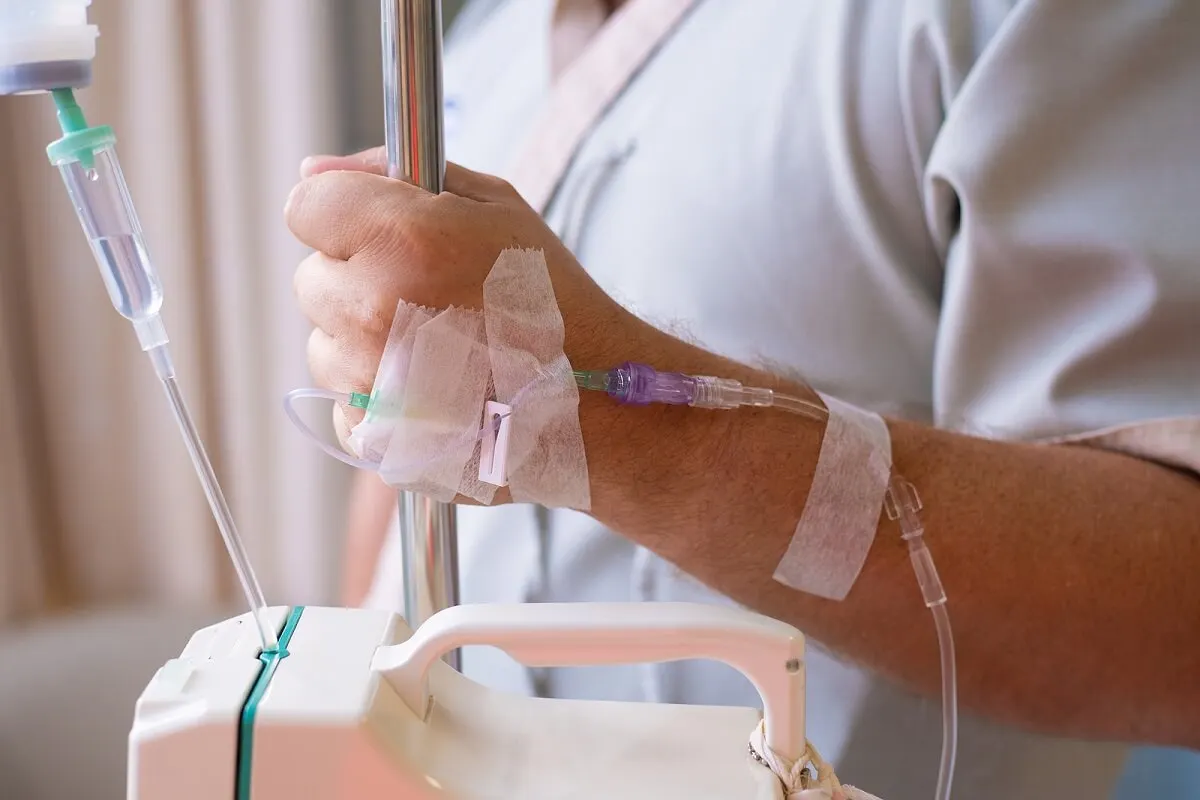Causes of Testicular Cancer and Treatment


Reviewed and approved by the nurse Leidy Mora Molina
Testicular cancer is rare and, in most cases, can be detected in the early stages when it still hasn’t spread. The first symptom is usually a swelling or lump in the testicle. However, sometimes there are no signs at all.
The best way to detect testicular cancer early is to do a monthly self-exam. This is a simple procedure that is much more relevant when there is a family history of this disease or there is any risk factor.
The most advisable thing if you notice swelling or any lump in the testicle is to consult your doctor as soon as possible. Testicular cancer has a good prognosis when detected early.
Testicular cancer

Testicular cancer occurs when some cells in the testicles begin to grow out of control. The incidence of this disease has increased in several countries of the world during the last decades, but the cause is unknown. In recent years, there has been a slight decrease in cases.
It’s estimated that this type of cancer occurs in one out of every 250 males. The disease most often affects young and middle-aged adults. About 6% of cases occur in children and just over 8% occur in men over the age of 55.
Most commonly, testicular cancer is successfully treated. Figures indicate that the probability of a man dying from this disease is 1 in 5,000. The usual symptoms of this pathology are as follows:
- One or more lumps or swelling in one or both testicles
- Pain or numbness in the testicle or scrotum
- Feeling of heaviness in the scrotum
- Greater firmness in one testicle than the other
- Dull pain in the groin or lower abdomen
- Sudden accumulation of fluid in the scrotum
- Breast enlargement or breast tenderness
- Swelling in one or both legs from a blood clot
- Back pain, in the lower lumbar region
- Chest pain, shortness of breath or bloody phlegm
Types of testicular cancer
In the testicles, there are many types of cells; each type can give rise to one or more types of testicular cancer. Depending on the modality, the treatment and prognosis of the disease will vary. The main types are as follows.
Germ cell tumors
It’s estimated that more than 90% of testicular cancers originate in the germ cells. These produce the spermatozoa and give rise to two types of tumors: seminomas and non-seminomas. Let’s see.
- Seminomas. These spread slowly and increase a protein called human chorionic gonadotropin (HCG). These levels are detected in a blood test, so it can be used for diagnosis.
- Non-seminomas. They usually occur in males in late adolescence or around 30 years of age. They include embryonal carcinoma, yolk sac carcinoma, choriocarcinoma, and teratoma.
It’s common for germ cell-associated testicular cancer to begin with a carcinoma in situ. This can evolve into invasive cancer and it isn’t easy to detect it before this occurs.
You may also be interested in: 7 Common Causes of Itchy Testicles
Stromal tumors
In this case, testicular cancer originates in the stroma, a supporting tissue that also produces testicular hormones. It corresponds to 20% of testicular cancers in children and about 5% of cases in adults. They can be of two types:
- Tumors of the Leydig cells. These cells produce the male sex hormones. Most tumors originating in these cells are benign. In rare cases, they develop into cancer and, if so, have a poor prognosis.
- Sertoli cell tumors. These cells nourish the germ cells, which produce semen. As in the previous case, most tumors are benign, but if they aren’t, they do not have a good prognosis.
Secondary cancers
Secondary testicular cancer is one that has originated in another organ, but has reached the testicles in its spread. The most common are lymphomas, which are more frequent in men over 50 years of age. In children, the most common cause is leukemia.
Causes and risk factors
Science hasn’t discovered the exact causes of testicular cancer. Most cases of this disease are associated with changes in chromosome 12. However, there are also cases related to changes in other chromosomes or in the number of chromosomes.
Some factors can increase the likelihood of testicular cancer. The presence of these factors doesn’t mean that the disease will develop, but can favor its appearance somewhat. They are the following:
- Being white
- Being between 15 and 35 years of age
- Family history of testicular cancer
- Being tall in stature
- Undescended testicle
- HIV infection
- Having had testicular cancer in the past
- Carcinoma in situ
Treatment
The physician who directs the treatment of testicular cancer is the urologist. Sometimes, he/she works together with a medical oncologist, an expert in chemotherapy, and a radiation oncologist. Treatment options are chosen based on each patient’s condition. The main options are as follows.
Surgery
Almost all testicular cancer is tackled with surgery first, even if it has already spread. There are two types of surgical interventions in these cases:
- Radical inguinal orchiectomy. The tumor is removed, along with the testicle and spermatic cord.
- Retroperitoneal lymph node dissection (RPLND). This is performed together with the radical inguinal orchiectomy or in another surgery after it. It consists of removing some lymph nodes from the back of the abdomen. It’s only done if there’s a need.
Surgery for testicular cancer rarely generates complications. Loss of a single testicle doesn’t affect erections or fertility. If both testicles are lost, sterility occurs and sexual desire may be reduced.
Radiotherapy
Radiation therapy is used especially in cases of testicular cancer of the seminoma type. It’s usually performed after surgery. This treatment may affect fertility temporarily. Also, it’s common to for it to produce a reddening of the skin and irritation in the groin area and abdomen. There’s often nausea and fatigue.
Find out more: New Cancer Treatment? Photoimmunotherapy Successfully Eliminates Malignant Cells
Chemotherapy

In chemotherapy, drugs are used to kill cancer cells. It may be used as the only treatment for testicular cancer, or it may be used before or after surgery to remove lymph nodes. Common side effects include hair loss, nausea, fatigue, and an increased risk of infection.
Stem cell transplant for high doses of chemotherapy
High doses of chemotherapy are sometimes necessary to treat testicular cancer. However, this can affect the spinal cord. Because of this, there’s a variant in which patients receive stem cell transplantation after drug therapy. This is a complex, expensive, and risky procedure.
A regular self-examination can save your life
Testicular cancer is one of the most curable forms of the disease. The cure rate is over 90%. Therefore, most men manage to recover from this pathology and live a normal life, provided they are treated in time.
If testicular cancer isn’t detected and treated in its early stages, it may spread. First, it invades the other testicle. Then, it can metastasize and be transported to other parts of the body, through the lymph nodes. The best prevention is self-examination and regular follow-ups with a physician.
All cited sources were thoroughly reviewed by our team to ensure their quality, reliability, currency, and validity. The bibliography of this article was considered reliable and of academic or scientific accuracy.
- Kemmer, K., Corless, C. L., Fletcher, J. A., McGreevey, L., Haley, A., Griffith, D., … & Heinrich, M. C. (2004). KIT mutations are common in testicular seminomas. The American journal of pathology, 164(1), 305-313.
- Ponce de León Roca, J., Algaba Arrea, F., Bassas Arnau, L., & Villavicencio Mavrich, H. (2000). Tumor de células de Leydig del testículo. Arch. esp. urol. (Ed. impr.), 453-458.
- Cheng, L., Albers, P., Berney, D. M., Feldman, D. R., Daugaard, G., Gilligan, T., & Looijenga, L. H. (2018). Testicular cancer. Nature Reviews Disease Primers, 4(1), 1-24.
This text is provided for informational purposes only and does not replace consultation with a professional. If in doubt, consult your specialist.








